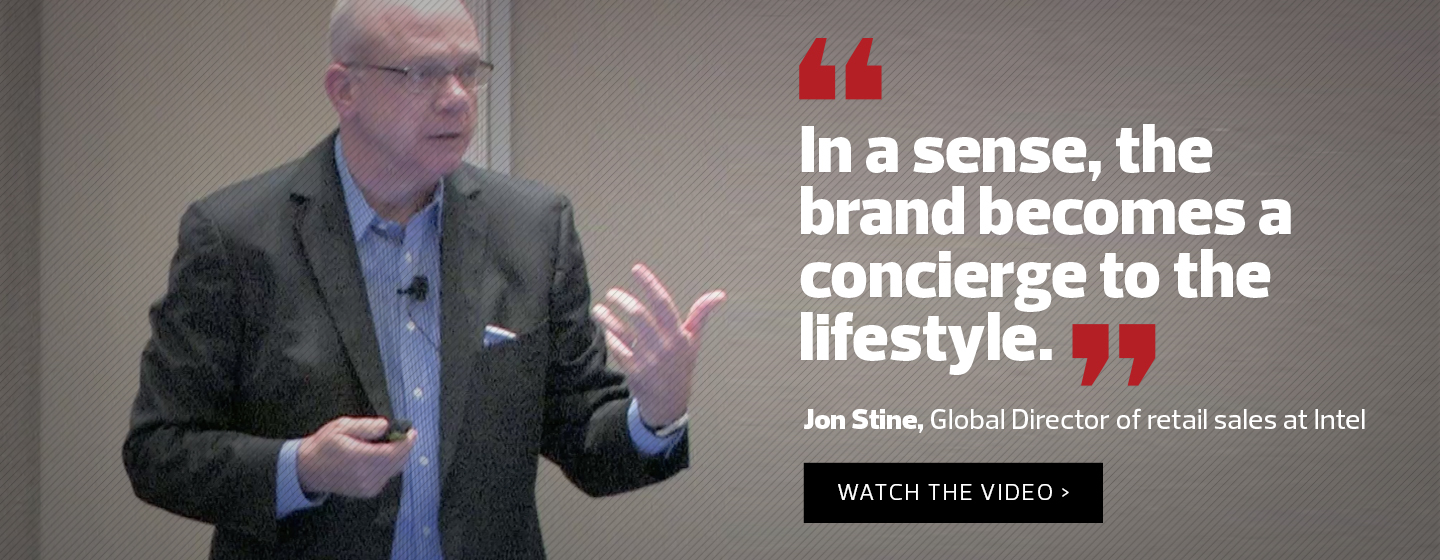How to Build a Future-Proof Retail Plan
According to Jon Stine, global director of retail sales at Intel, we are living in “a world of Guttenberg moments” — instances of innovation that, much like the introduction of the printing press in 1439, can turn entire industries upside down.
“There’s a kid somewhere in a basement or a garage right now, probably had no sleep, on his fifteenth cup of coffee, envisioning a future we cannot imagine,” Stine says. “That’s going to hit us in the next three years, and things are going to change again.”
In just the past couple of decades, Stine points out, retail has been upended multiple times, with the introduction of search engines, online retail, social media and mobile devices. It may prove impossible to guess what’s next, but one thing is certain: Retailers must be ready to adapt to it, or risk being left behind.
Here are four steps Stine says retailers can take now to prepare:
Win the Screens
“Mobile phones are the remote controls for shopping,” Stine says. He goes further, stating that the true “front door” to a retail store isn’t in the mall, but the place where customers first interact with a brand online. And the most important real estate spaces in retail, he says, are the square inches of personal screens.
In order to capture customers, Stine says, retailers must align their ad spend with the way people spend their time. While people are on their mobile devices for nearly three hours a day, he points out, mobile only accounted for 8 percent of ad spend in 2014.
Re-Create the Store
Nearly 65 percent of shoppers begin their shopping experience online, Stine says. What’s more, 62 percent of shoppers cite online ratings and reviews as the primary influencer of their decisions, compared with only 14 percent who cite in-store sales associates.
This means retailers must rethink the purpose of physical stores, Stine says, ensuring that they provide value beyond the presence of salespeople whose knowledge can never compare with the information available online.
Percentage of U.S. digital natives who still prefer to go in physical stores to touch and try products
SOURCE: Intel, “Agenda 2019 – The Big Pivot: Retail Redefined,” 2015.
The new store, he suggests, might look something like a “living, breathing website,” with experiential and virtual showrooms that enable a try-and-test model.
Redefine Products
Because of increased consumer choice and price transparency, many products are becoming “commoditized,” Stine says, and it is increasingly difficult for retailers to demand a premium that will allow for healthy profit margins.
Stine says retailers should aim to provide value-added services in addition to off-the-shelf products. He points to Wal-Mart, which has begun offering healthcare and banking services.
“In a sense, the brand becomes a concierge to the lifestyle,” Stine says. “That’s a redefinition of retail — a redefinition of product — and the leaders are moving in that direction.”
Drive Value from Data
The use of customer data can provide huge competitive advantages, from targeting advertising to predicting demand. But, Stine notes, retailers can only use data that shoppers provide them with, and people say that they don’t necessarily trust stores with their information.
In one survey, Stine says, only 31 percent of respondents said they trusted national retailers to protect their personal data and use it to provide something of value. That put retail near the bottom of a list of 10 industries, with retailers ranked beneath credit card companies and government agencies.
“We talk about moving to an intimacy with our shoppers,” Stine says, “and yet if they do not trust us to share data, we will never get there.”
Learn more about technology’s transformation of retail.










